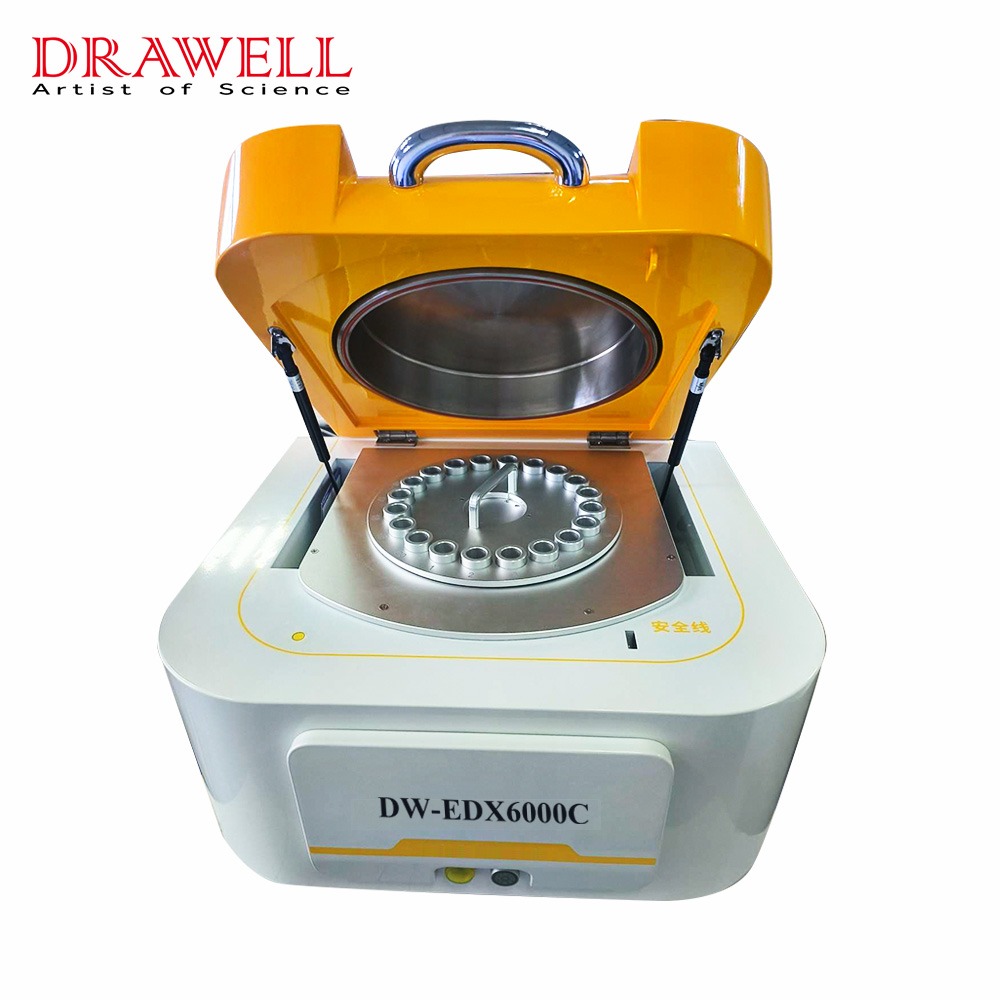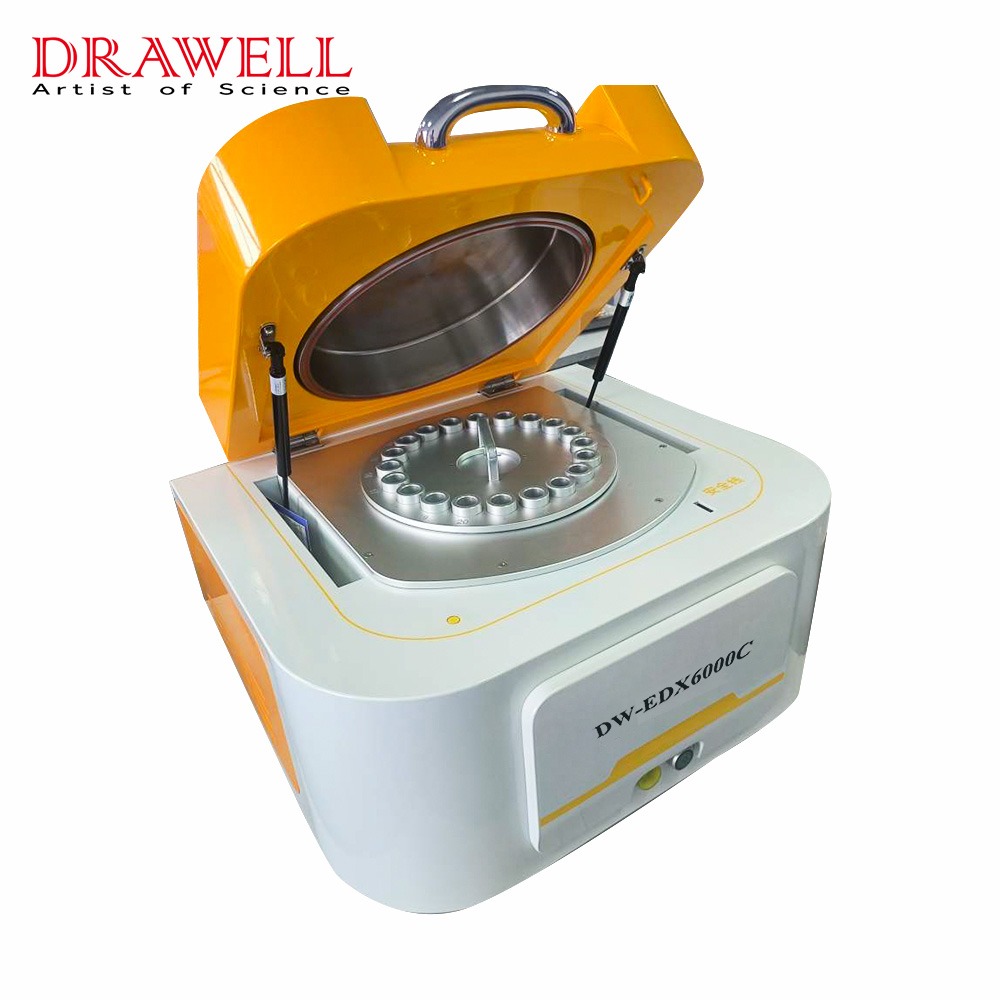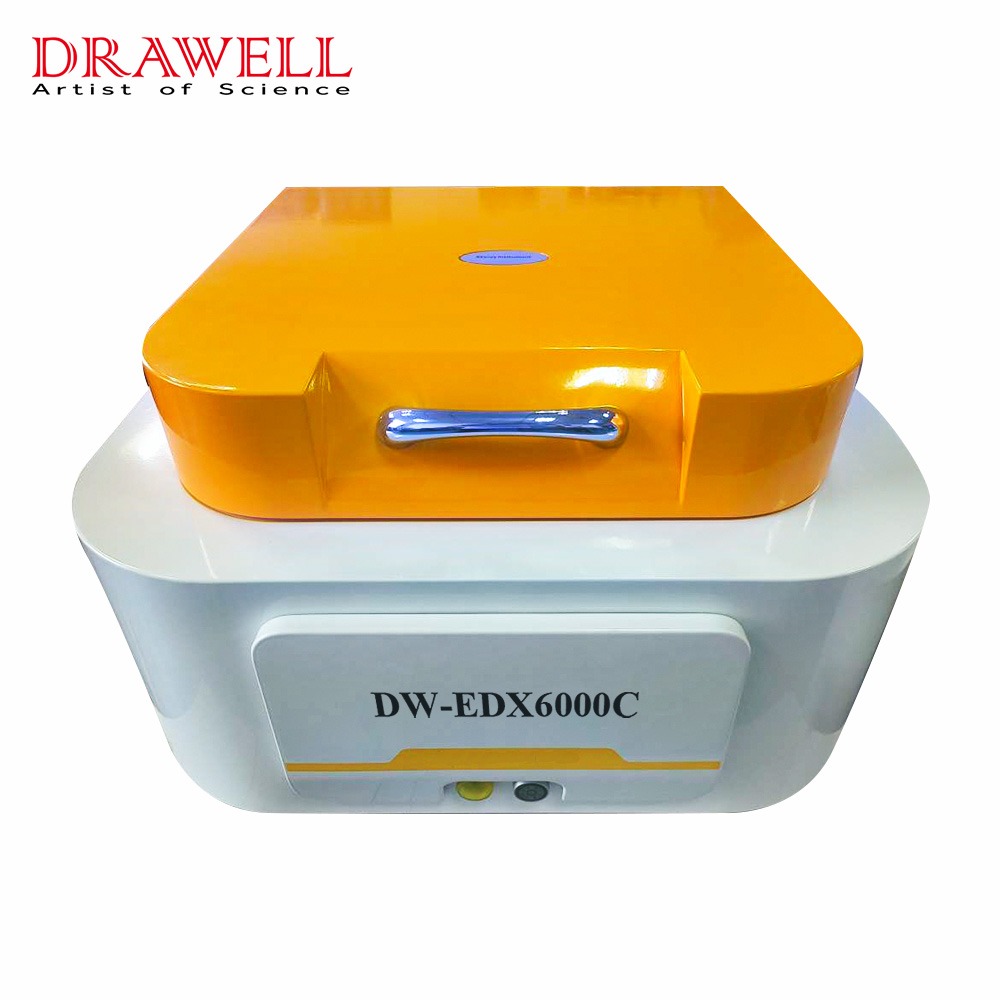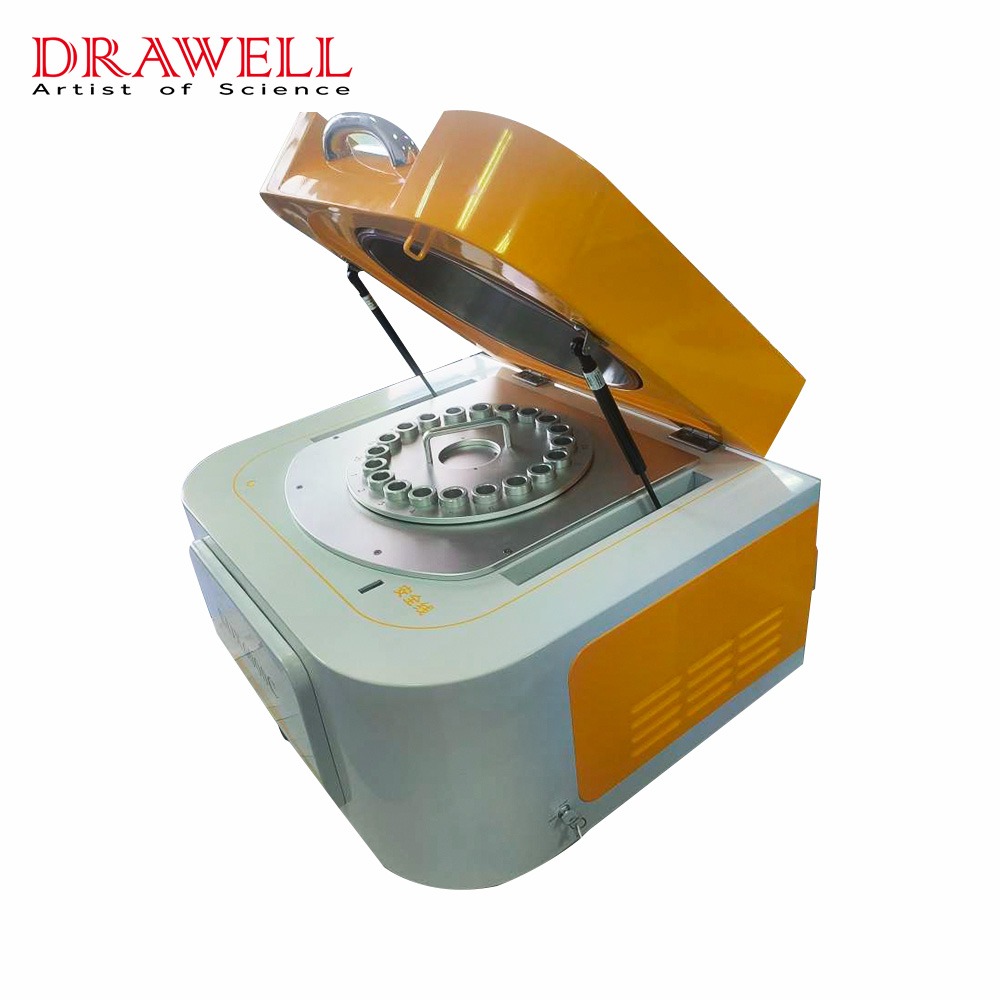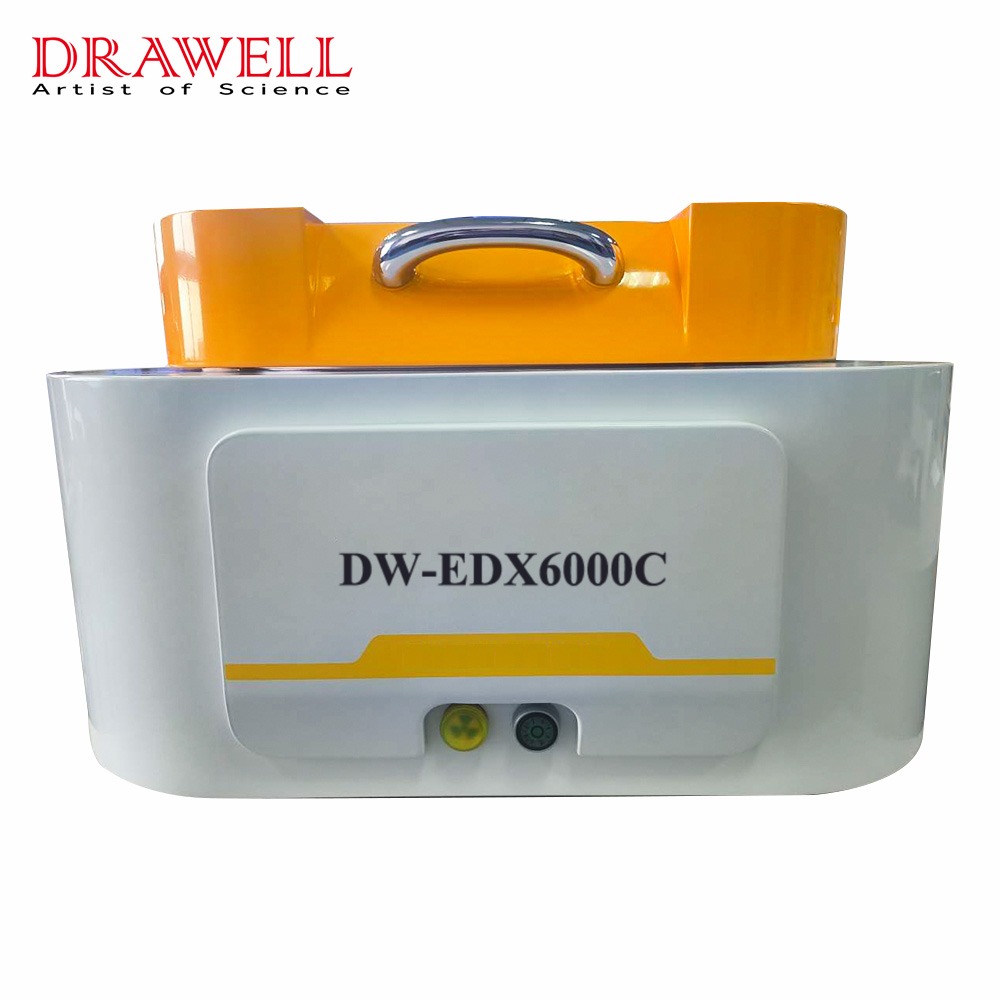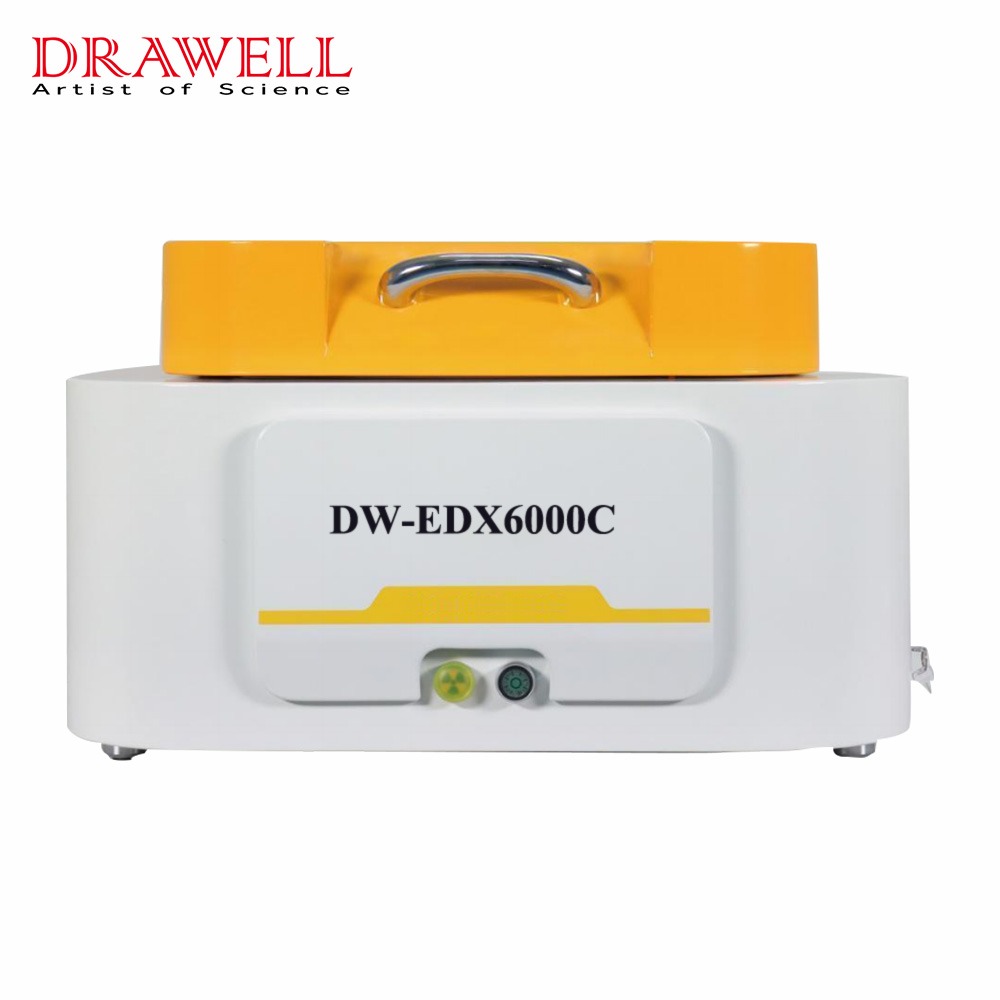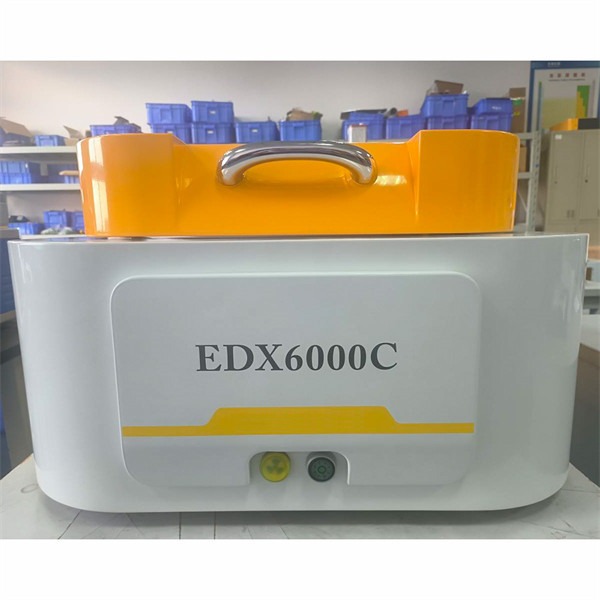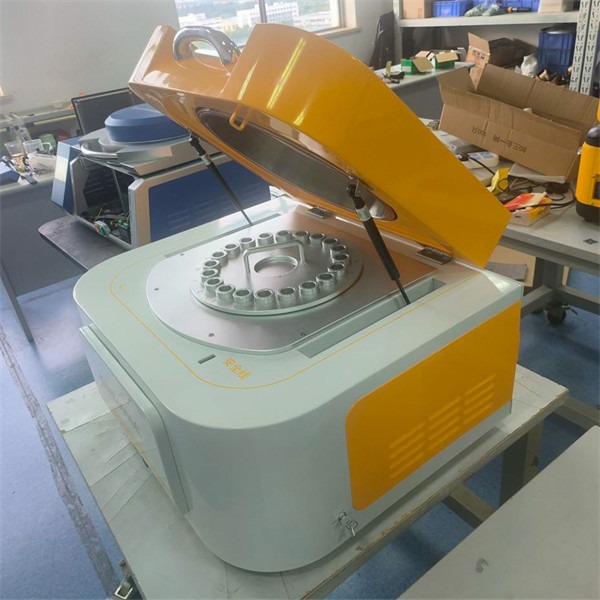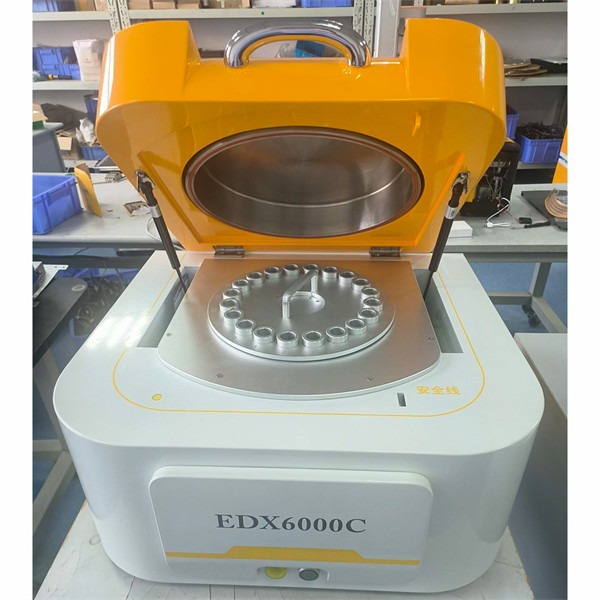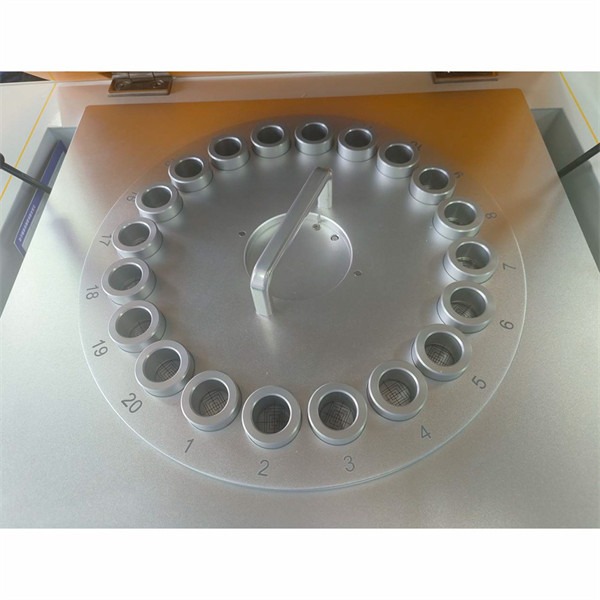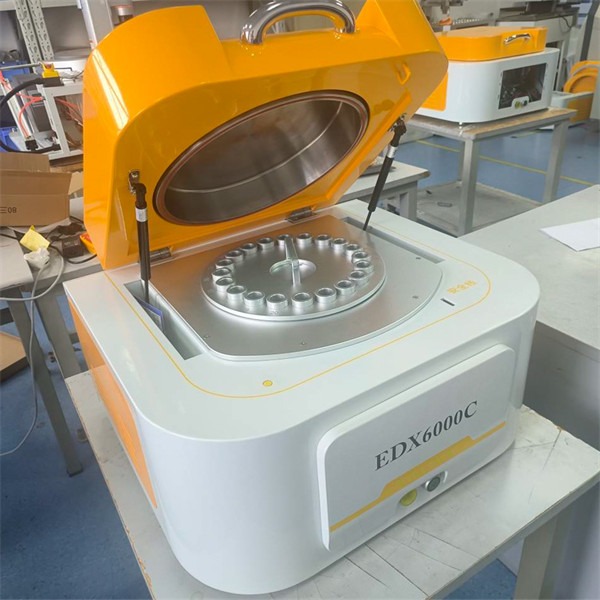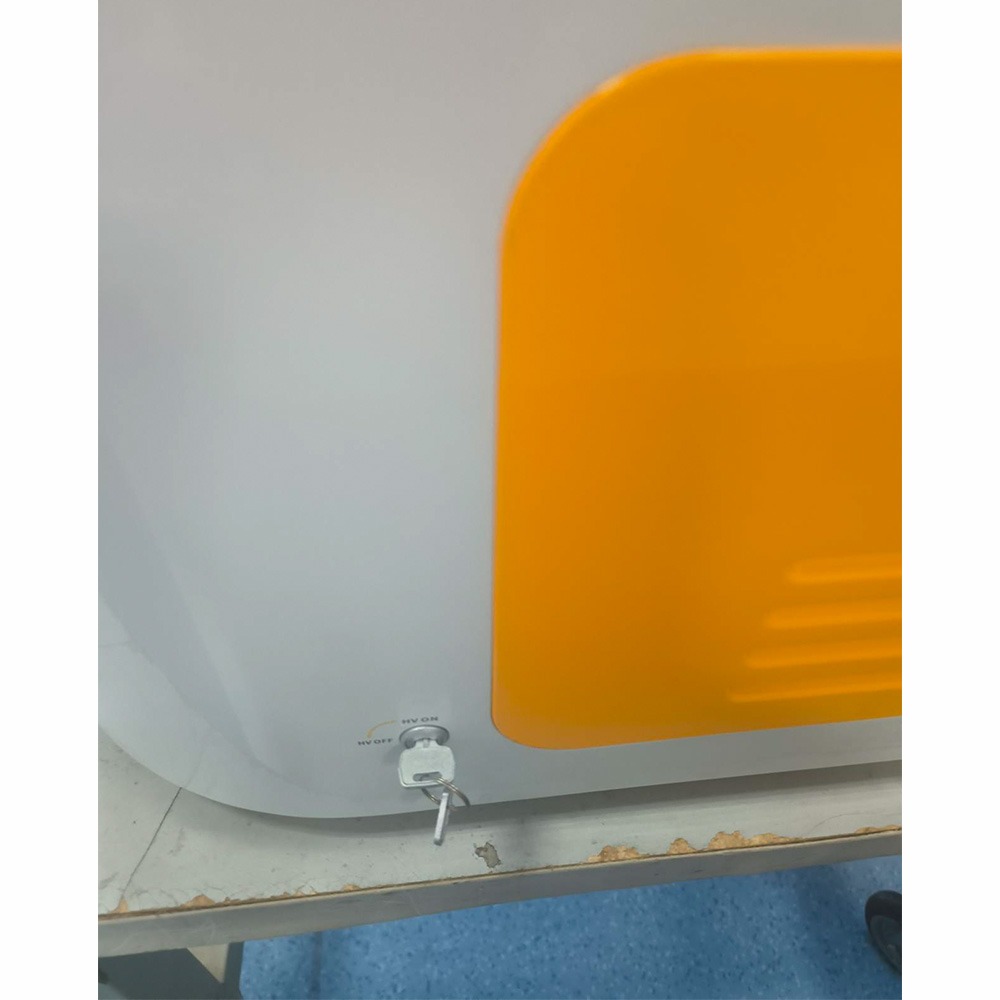DW-EDX6000C Energy-Dispersive Spectrometer
The new generation energy-dispersive spectrometer DW-EDX6000C features a large-area graphene ultra-thin window electrically cooled semiconductor SDD detector, an ultra-low-loss test optical path, an ultra-thin beryllium window Oxford tube excitation light source, Siemens PLC control for single-sample and multi-sample chamber systems (with options for 9, 12, and 20 sample chambers), a combined vacuum and helium system, a sample spinning system, and a three-fold security protection system for the instrument (detector anti- puncture function, high-voltage key protection, and sample cover self-locking function).
Features of DW-EDX6000C Energy-Dispersive Spectrometer
This type of energy-dispersive spectrometer seamlessly combines single-sample and multi-sample chamber injection modes. It is complemented by the latest research achievement, the XRF composition analysis software version 4.0 and RoHS 5.0 full intelligent version software. It enables one-click testing for both liquid and solid samples. Its powerful intelligent algorithms can automatically identify sample materials and select the appropriate curve, achieving true intelligent automatic detection for multi-sample positions.
The instrument offers low operating costs, improved maintenance performance, and enhanced convenience. It can be applied to a wide range of fields, from product management subject to regulations such as RoHS/ELV directives and toy directives, to everyday research in general material analysis. This includes element analysis in various industries, ranging from electronic and electrical materials to metal composition analysis, automotive mechanical testing, petrochemical element analysis, pharmaceutical and food quality control, geological mineral element analysis, and analysis in industries such as cement, refractory materials, and glass.
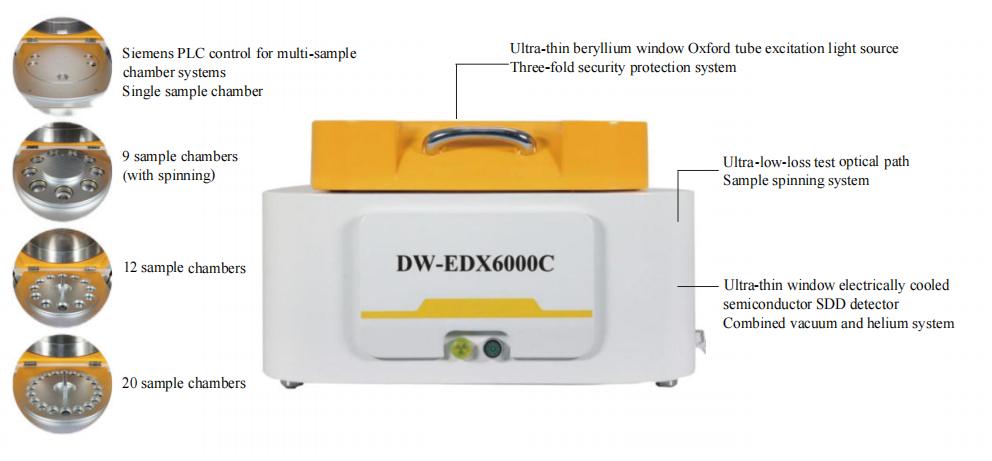
Parameters of DW-EDX6000C Energy-Dispersive Spectrometer
| Model | DW-EDX6000C |
| Elemental Analysis Range | Fluorine (F) to Uranium (U) |
| Analytical Detection Limit | As low as 0.2 ppm (for light matrices) |
| Analytical Range | ppm to 99.99% |
| Analytical Accuracy | <0.05% (RSD value for multiple repeated measurements of main elements in samples witha content >96%) |
| Detector Energy Resolution | SDD detector, ≤129eV |
| Excitation Source | Tube voltage 5~50kV, tube current 0~1000uA |
| High Voltage Generator | Imported Spellman High Voltage |
| Testing Atmosphere | Atmospheric, Vacuum, Helium |
| Sample Introduction System | 9 sample chambers (with cup rotation), 12 sample chambers + single chamber, 20 sample chambers + single chamber (optional), controlled by PLC |
| Any number of automatically matchable or selectable analysis and identification models. | |
| Mutually independent matrix effect correction model. | |
| Multivariate nonlinear regression program. | |
| Temperature Range | 15°C to 30°C |
| Power Supply | AC 220V ± 5V, recommended to configure with AC purified stabilized power supply |
| Instrument Size | 646 (W) × 578 (D) × 388 (H) mm |
| Sample Chamber Size | Φ340 × 64 (H) mm |
| Instrument Weight | 85KG |
Options
- 9-Sample Chamber Package with Sample Rotation (Sample cups can rotate to reduce sample homogeneity errors, suitable for regular samples like powder compacts. Only 9 sample chambers are available, without single-chamber switching function. Inner diameter of sample cups Φ35mm, outer diameter Φ42mm).
- 12-Sample Chamber Package (Cannot rotate, suitable for testing materials like powder compacts. Switching between single and multiple sample chambers is possible. Inner diameter of sample cups Φ35mm, outer diameter Φ42mm).
- 20-Sample Chamber Package (20 sample chambers cannot rotate, suitable for testing materials like plastic granules and liquids. Switching between single and multiple sample chambers is possible. Inner diameter of sample cups Φ25mm).
Advantages of DW-EDX6000C Energy-Dispersive Spectrometer
1. Outstanding Performance, Unrivaled Excellence
Equipped with a large-area graphene ultra-thin window electrically cooled semiconductor SDD detector, the instrument boasts a remarkable performance with the optimal coordination of a 4096-channel high-speed digital processing multi-channel analyzer, high-power high-voltage tube, and excitation light source, resulting in ultra-high sensitivity. Compared to previous models, the element range has been expanded to include fluorine (F), and the lower limit of element detection can be improved by 5 to 10 times, with a detection limit as low as 0.2 ppm (light matrix). Counting rates can be increased up to 300 KCPS, effectively addressing the demands of high-precision analysis and enhancing the reliability of analytical results.
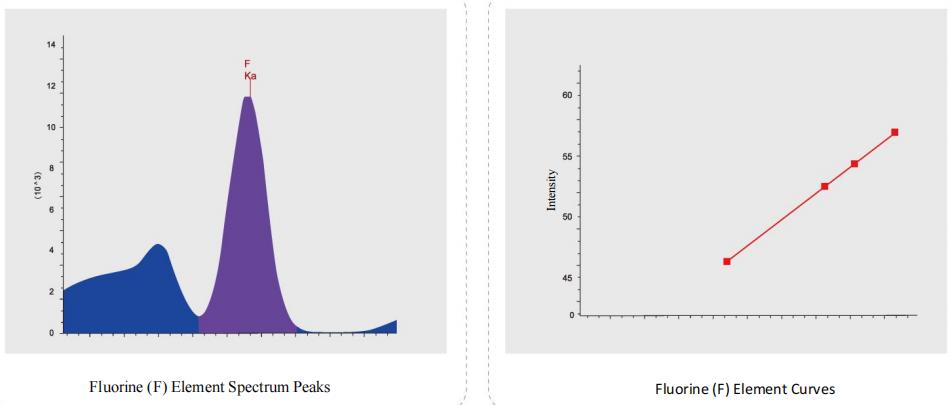
| Measurement Times | Fluorite GBW07252/CaF2 | Sample Containing Fluorine (F) Element |
| F/45.098 | F/2.64 | |
| 1 | 45.18(%) | 3.09(%) |
| 2 | 45.19(%) | 2.57(%) |
| 3 | 44.96(%) | 2.72(%) |
| 4 | 45.06(%) | 2.22(%) |
| 5 | 45.06(%) | 2.89(%) |
| 6 | 44.77(%) | 2.31(%) |
| 7 | 45.08(%) | 2.74(%) |
| 8 | 45.19(%) | 3.34(%) |
| 9 | 45.03(%) | 2.47(%) |
| 10 | 44.97(%) | 2.71(%) |
| 11 | 45.30(%) | 3.02(%) |
| Maximum Value | 45.30(%) | 3.34(%) |
| Minimum Value | 44.77(%) | 2.22(%) |
| Standard Deviation | 0.14(%) | 0.34(%) |
Table of Fluorine (F) Element Stability
2. Intelligent Switching, Worry-Free Testing
The AI-based sample recognition system, in conjunction with a fully matched analysis mode, ensures that sample detection is completed in a single action, eliminating errors caused by manual curve selection. The multiple background simulation function helps mitigate deviations caused by sample differences. The powerful intelligent algorithm can automatically identify sample materials and select the appropriate curve, achieving true intelligent automatic detection for multi-sample positions. For light element testing, both vacuuming of powders and helium filling for liquid samples are achieved. The software enables seamless dual-gas path switching, effectively solving the issue of conventional XRF instruments being unable to measure light elements in liquids.
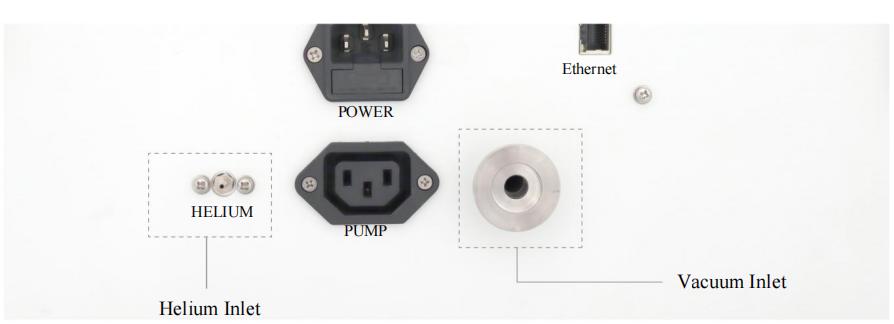
3. Multiple Protection, Safety Assurance
The detector protection device closes the detector window after instrument testing to prevent damage to the detector window. The instrument’s protective cover, electromagnetic lock, and tube high-voltage interlock prevent the sample chamber cover from being opened during the testing process, thus preventing accidental harm to the operator when the cover is opened. Software misoperation reminders, a three-dimensional mazelike instrument design, electronic interlock sensing, mechanical isolation safety lock protection, and software abnormal interruption are multiple protective measures that ensure the safety of users.
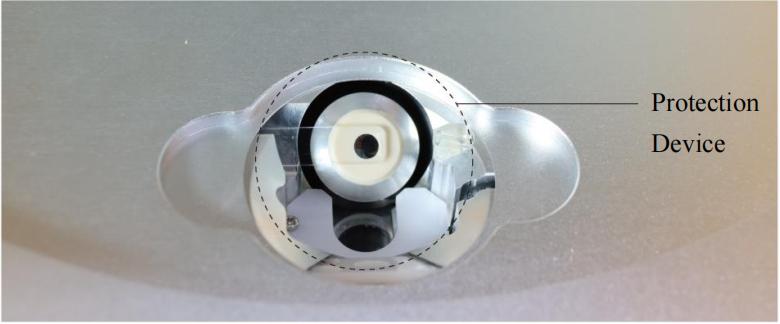
4. Auto Sample Loading, Unmanned Operation
The system is equipped with Siemens PLC control for 9-sample, 12-sample, and 20-sample chamber configurations. 12-sample and 20-sample chambers can be switched to a single sample chamber in one second, meeting the testing requirements for small and large samples. The 9-sample chamber rotation system improves the testing of non-homogeneous sample elements. Using multi-sample chamber systems for sample introduction can lead to a 50% reduction in equipment costs, and through human-machine cooperation, it can boost labor efficiency by 50%.
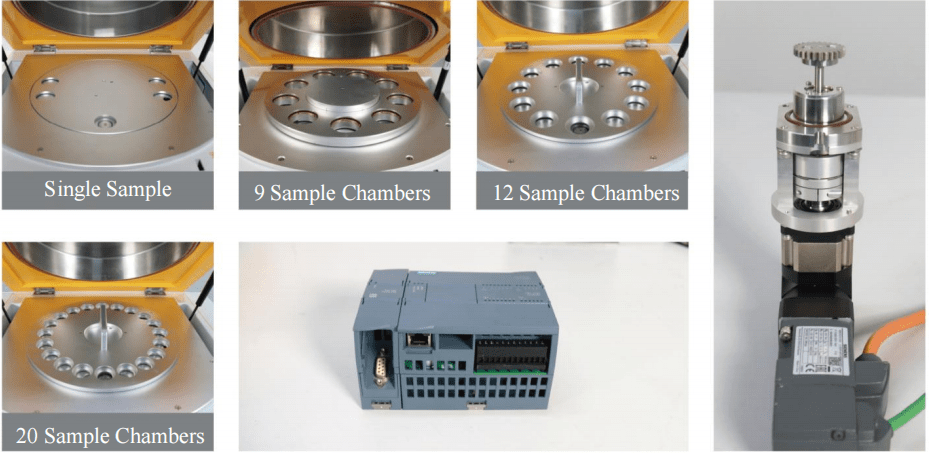
Applications of DW-EDX6000C Energy-Dispersive Spectrometer
- Analysis of harmful elements for RoHS, ELV, toy safety, footwear leather, and similar applications.
- Elemental analysis for environmental soil, solid waste, soil remediation, etc.
- Geological and mineral product analysis.
- Composition analysis of alloys (copper, stainless steel, etc.)
- Measurement of metal coating thickness, determination of plating solution and coating content.
- Detection of precious metals such as gold, platinum, silver, and various types of jewelry.
- Analysis of petroleum and chemical product content.
- Elemental analysis in building materials industry (cement, refractory materials, glass, etc.)
- Determination of beneficial and harmful elements in feeds, fertilizers, etc.
- Other inorganic elemental analysis industries.


